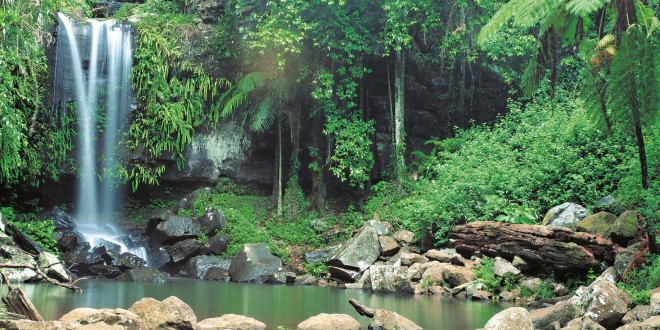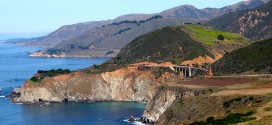Located about 171 kilometres from Darwin in the Northern Territory, Kakadu National Park is one of Australia’s greatest natural treasures. The protected area covers nearly 20,000 square kilometres in the Alligator Rivers region and is the second-largest national park in the entire world. As one of Australia’s most popular tourist attractions, Kakadu National Park attracts hundreds of thousands of visitors each year. People come to see the park’s breathtaking gorges, stunning waterfalls, historic rock art and diverse natural wildlife.
The park’s traditional owners, a group of native Aboriginal residents, manage the park alongside the Director of National Parks. Many of the Aboriginal people are interested in sharing their culture and country with others. Visitors have access to a range of amenities, most of which are located in the small town of Jabiru. Kakadu National Park has tour guides who can take visitors along the Nature’s Way drive, a loop that begins in Darwin and runs for about 900 kilometres. Tourists can also drive alone but they are cautioned that some areas in the park are inaccessible by standard two-wheel drive vehicles.
This historic region in the Northern Territory offers visitors a unique look at authentic Aboriginal culture and the opportunity to explore one of Australia’s greatest natural reserves. Don’t miss out on these four amazing opportunities when you visit Kakadu National Park.
1. Learn about Aboriginal Rock Art
For thousands of years, the Aboriginal people have used the walls of the Nourlangie Rock Art Site as a canvas and a shelter. The incredible rock formation includes three main art galleries, including the Anbangbang site, the Nanguluwur site and the Ubirr site.
Aboriginal art uses a wide range of symbols and pictures to detail the culture’s mythology and important stories. Only certain members of the community are allowed to know the full meaning of the artwork. However, there are a number of signs posted at each site to help viewers interpret the general meanings of different works.
Without a doubt, the rock art is one of the most important things to see during your visit to Kakadu National Park. Learn Aboriginal creation stories, see how art has changed over time and experience the incredible area where people have lived for thousands of years.
2. Watch Nearly 300 Species of Birds
At Kakadu National Park, you can see nearly one-third of all the different bird species that live in Australia. Birdwatchers can see more than 300 different types of birds, including blue-winged kookaburras, barking owls, red goshaws, rainbow pittas and black-tailed treecreepers. When you catch a tour during early morning or late afternoon, tour guides will take you to the best locations to see these rare species.
3. Get to Know the Land through Bushwalking
Bushwalking isn’t for everyone. The Kakadu terrain is very challenging, and you shouldn’t attempt to walk it if you’re not in good shape. However, healthy visitors can get an intimate look at one of Australia’s most beautiful wonders. Before embarking on your trip, be sure to pack plenty of water, food, flashlights, maps, compasses and other essentials for safety. Stop at the Bowali Visitor Centre for more information and tips on the local environment.
4. See Australia’s Famous Crocodiles
Kakadu is also well known for the large saltwater crocodiles that live near the area’s rivers. Though the crocodiles are some of the world’s most dangerous animals, you can see them safely from one of the area’s cruise ships or from the Cahill Crossing viewing platform. While you’re visiting the region, you can also enjoy fishing for popular species like barramundi on one of the Alligator rivers.
 RealStateVentures.com.au RealStateVentures.com.au
RealStateVentures.com.au RealStateVentures.com.au

